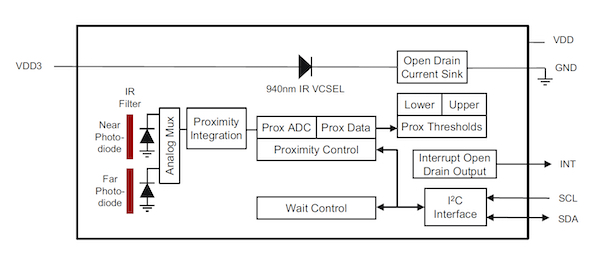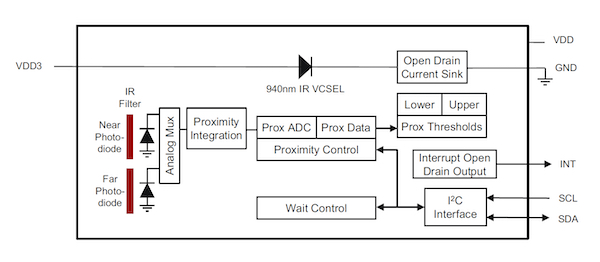ams, a leading worldwide supplier of high-performance sensors and related solutions, launched its TMD2635 on September 16—the world's smallest digital proximity sensor module.
It is thought that this module could pave the way for lighter, smaller wireless earbuds that are always available and have longer battery lives.
The TMD2635 IR Proximity Sensor Module
Integrating a low power infrared VCSEL (Vertical Cavity Surface Emitting Laser), two sensor pixels (near field and far field), and a digital fast-mode I2C interface, the TMD2635 is a light-to-digital sensor module in an ultra-small package of a mere 1mm3.
Other features and benefits of the TMD2635 include proximity crosstalk compensation, 940nm IR proximity with automatic ambient light subtraction, split near/far photodiodes and offset emitter/detector placement, and 0.18µm process technology with 1.8V I²C. Direct/release events can be interrupt-driven and take place when proximity result crosses threshold settings at upper and/or lower bounds.

The TMD2635 sensor. Image courtesy of ams.
The obvious benefit of the TMD2635 is its size—ideal for the smallest of applications that require maximum board space and industrial design flexibility—however the module has also been designed to help reduce overall system power consumption. It also enables accurate and stable measurements behind spectrally distorting materials in low light environments.
Product Applications
While the TMD2635 has a wide range of use cases including display backlight control and optical switch, it is wireless earbuds that are set to benefit most from ams' new module.
Dave Moon, a Senior Product Marketing Manager at ams, said, “The TMD2635 underpins ams’ leading proximity sensing position in the consumer electronics market. This latest product occupies 1mm3 of space and is more than six times smaller by volume than the previous 2-in-1 IR proximity sensor module. And because of the split near-far field photodiode offset emitter to detector positioning, designers of wireless earbuds and other wearable and portable devices have the freedom to optimize both the size and shape of the needed sensor apertures in their industrial designs and optimize their products for comfort and performance…"
With Qualcomm's recent State of Play Report indicating that consumers are increasingly showing a preference for wireless earbuds, a market that is expected to see compound growth of 27% over the next few years, the ability to develop smaller, lighter, and earbuds—something made possible by ams' TMD2635 module—is good news for product designers and engineers who need to meet market demand.
Using TMD2635 modules, designers can create earbuds that appear more to consumers' demands for smaller, more comfortable and longer-lasting earbuds that have more reliable proximity detection.




